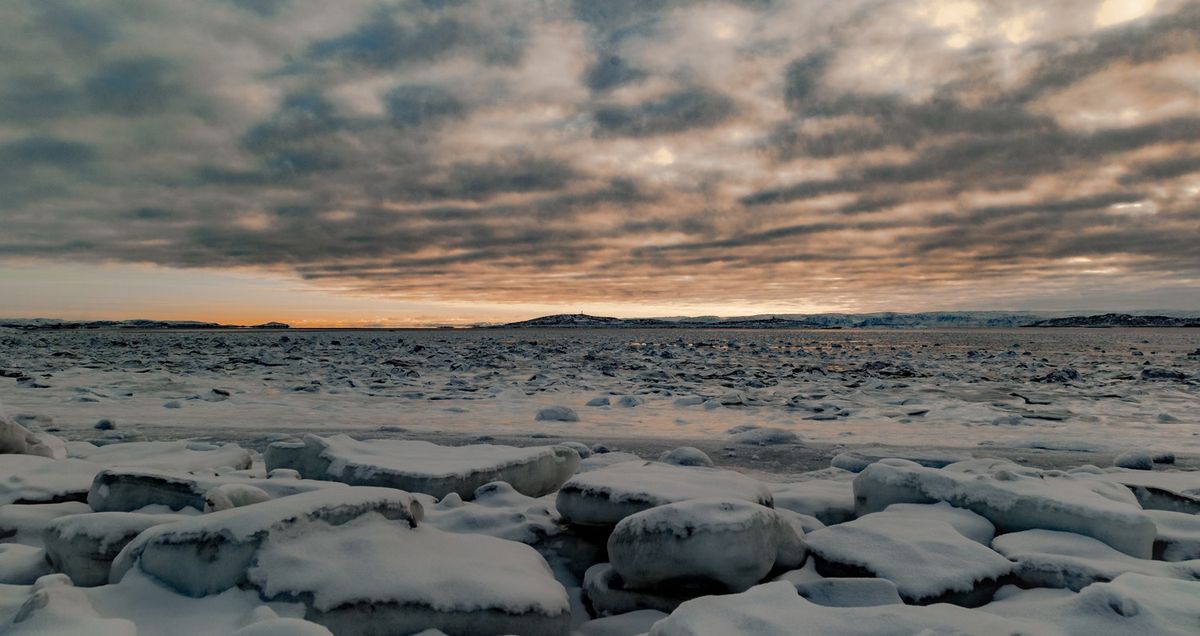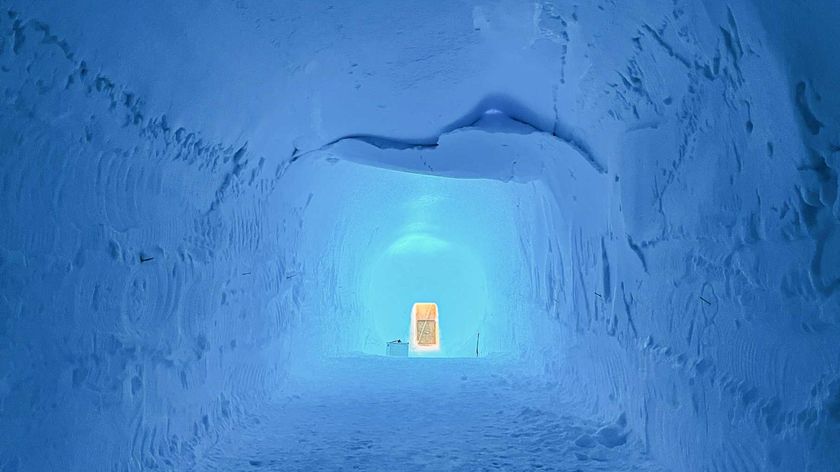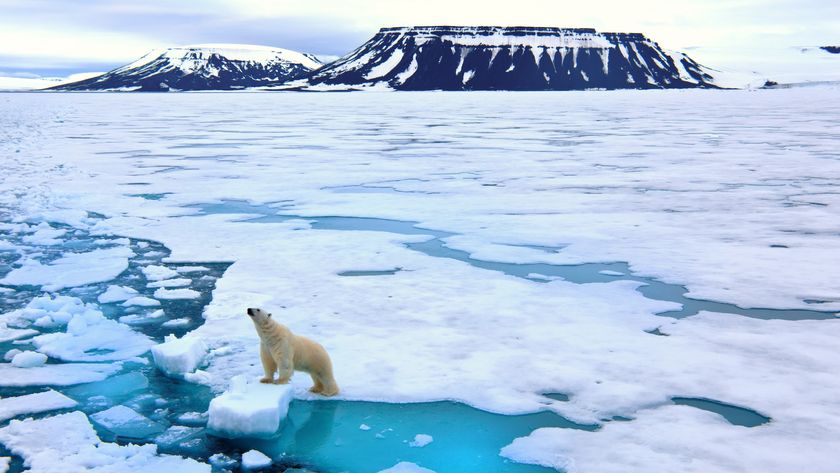The Melting Arctic Is Covering Itself in a Warm Layer of Clouds

BOSTON — The Arctic is melting. The first ice-free summer is coming. The whole melting process is speeding up the warming of the entire Earth. And every autumn, a layer of extra clouds are forming over the ice-thinning Arctic that — researchers now believe — are speeding that melting up.
In a talk here March 4 at the March meeting of the American Physical Society, Ariel Morrison, an atmospheric scientist at the University of Colorado, Boulder, presented research that for the first time offered a clear answer as to how the melting Arctic is changing its clouds, and how those clouds in turn are changing the Arctic. It was originally published in the journal JGR Atmospheres Dec. 10, 2018.
"Right now, there's about a 20-year estimate: Between the 2040s and the 2060s, we're expecting to see the first ice-free summer," Morrison told Live Science. "This moves that toward the earlier end of the estimates." [On Ice: Stunning Images of Canadian Arctic]
Modeling how clouds impact the Arctic is complicated because they have two different effects: They reflect light back into space before it can hit the ground, and they act like a blanket that traps heat from escaping from the planet's surface into space. The first effect cools the ground, and the second warms it up.
When the sun is out, every cloud does dual duty: reflecting incoming light back into space, and reflecting radiating heat back toward the ground. So it can be difficult to know whether, in any given situation, clouds are doing more to warm the surface or keep it cool.
Until Morrison's research, scientists weren't sure if the changing cloud situation in the Arctic was speeding or slowing melting overall. There were just too many factors involved.
Clouds are also famously difficult to study in climate science in general. And in the Arctic, matters are further complicated by the vast, ice-free North Atlantic Ocean that has lots of cloud cover in the sky but no sea ice due to the warm underwater currents that keep the ocean's surface above the freezing point. Morrison developed a "mask" that cut out all the noisy, unnecessary extra data from the North Atlantic so she could target regions where the clouds were actually relevant to melting.
Sign up for the Live Science daily newsletter now
Get the world’s most fascinating discoveries delivered straight to your inbox.
Once she narrowed down the model to target the clouds she was focused on, Morrison found that the melting Arctic isn't dramatically changing the reflective, cooling effect of clouds. In the summer, most clouds in the Arctic form from moisture that flows through the atmosphere from warmer southern latitudes. So the yearly increase in open water in the Arctic doesn't have a big effect on total cloudiness during the months when clouds are most crucial to reflecting light back into space.
"If we had found that summer clouds were responding to sea-ice loss — so you melt some ice, a cloud forms on top of it — then clouds would have this negative feedback with sea ice," she said.
In other words, as sea ice melted, clouds would do more to cool the Arctic.
But it turns out, the summer melt has no significant impact on clouds.
However, Morrison found, things are different in the fall. During those months, it turns out, the skies above patches of open water are much more likely to be cloudy. And those clouds do much more to trap heat than to reflect light into space.
"It's very, very seasonal in the Arctic," Morrison said. "Because the Arctic only has sunlight for about six months out of the year, and it's strongest in the middle of the summer. So only in the middle of the summer, only in the middle of July, do clouds have this cooling effect, because they're reflecting away more [light] than they're [trapping]."
The rest of the year, more clouds means more heat. And during the fall, less ice also seems to mean more clouds. So as the Arctic melts, it's effectively covering itself in a seasonal blanket that makes that melting happen even faster.
Morrison said she hopes her research will, in the future, factor in to Arctic climate models, so they can more precisely plot out the future of the quickly warming region.
- Images of Melt: Earth's Vanishing Ice
- In Photos: The Vanishing Ice of Baffin Island
- Collapsing Beauty: Image of Antarctica's Larsen Ice Shelf
Editor's note: This article was corrected at 10:24 am EST on March 11, 2019 to reflect that Morrison's work had already been through peer review and been published, contrary to what was originally stated.
Originally published on Live Science.












